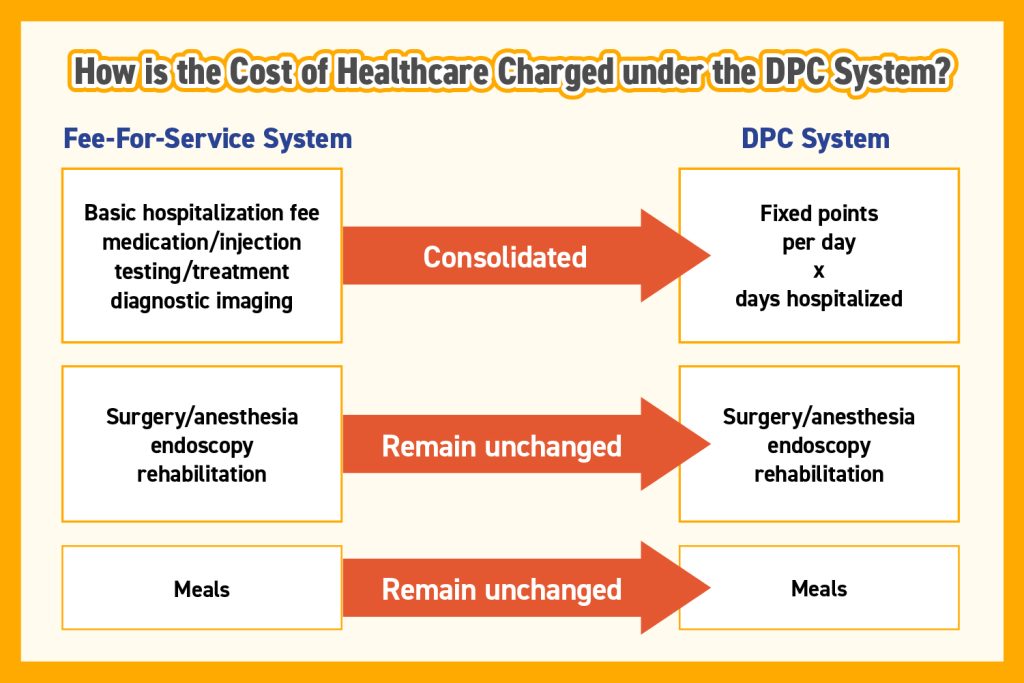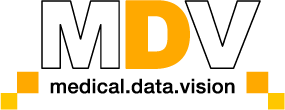Understanding the DPC System: Benefits, Calculation Methods, and Key Insights
As a system unique to Japan, it may sound unfamiliar even to those engaged in the healthcare industry. This article will boost your understanding of the DPC system.
What is the DPC System?
DPC stands for Diagnosis Procedure Combination, which is a per-diem payment system for acute inpatient care based on diagnostic group classifications. In 2003, it was implemented at designated advanced treatment hospitals.
Cost of healthcare for inpatient includes the bundled charges, the fee-for-service charges, the specific hospitalization fees, the meal costs, and the patient’s copayment. In particular, basic hospitalization fees, medications, injections, tests, imaging diagnostics, and treatments are included in the bundled charges. On the other hand, surgeries, anesthesia, and rehabilitation are subject to the fee-for-service charges.
Source: Ministry of Health, Labour, and Welfare, Overview and Basic Concepts of the DPC System (DPC/PDPS)(Accessed May 10, 2023).
Role of the DPC System
In context of inconsistencies in the duration of hospitalization, of treatment, and of cost of healthcare despite treating patients with similar conditions, the DPC system contribute to the optimization of healthcare cost and the consistency of services.
To address this issue, reimbursement framework is taking account of standardized treatment protocols and medical costs by analyzing inpatient data such as electronic health record and claims, resulting in the improvement of the consistency issues.
Hospitals Participating in the DPC System
Given the fact that the DPC system is not mandatory for medical institutions, not all of them are billing based on the DPC diagnostic group classification table. Hospitals participating in the DPC system are categorized as either DPC-designated hospitals or DPC-preparation hospitals.
DPC-designated hospitals are billing based on the DPC diagnostic group classification table. On the other hand, same as non-DPC hospitals, DPC-preparation hospitals bill based on the medical fee point schedule using fee-for-service system.
Generally, “DPC hospitals” refers to DPC-designated hospitals, while DPC-preparation hospitals represent facilities in the preliminary stage of adopting the DPC system.
Benefits Brought by the DPC System
By implement the DPC system, both the patient and hospital sides are receiving positive impacts.
For Patients
The DPC system often leads to reduced cost of healthcare. Unlike the fee-for-service model, where costs and treatments are in proportion, the DPC system employs a fixed daily rate, resulting in stabilizing the cost regardless of the quantity of medication.
Additionally, prevention of excessive medication and unnecessary hospitalization are also considered as one of the benefits to the patients.
For Hospitals
While it contributes to a consistent quality of healthcare, adopting the DPC system can result in higher reimbursement rates. Under the Ministry of Health, Labour, and Welfare’s current reimbursement policies, the DPC system is considered to be more profitable than the fee-for-service model to acute care hospitals.
Calculation Methods Under the DPC System

In the traditional fee-for-service model, medical expenses were calculated for each service. In contrast, the DPC system uses a combination of bundled payment and fee-for-service payment.
In particular, while basic hospitalization fees, medications, injections, tests, imaging diagnostics, and treatment are bundled and calculated with a formula of fixed daily rate multiplied by length of stay; surgeries, anesthesia, rehabilitation, etc. are still subject to the fee-for-service system. Meal costs are calculated using traditional methods.
Innovation to the Healthcare System in Japan
Under the goal of optimizing the cost of health care, the DPC system is contributing to the reduction of financial burdens to the patients and promote appropriate treatment protocols. However, hidden concerns, such as unstable hospital management due to lower bed occupancy rates and the risk that some patients may not receive sufficient treatment are still pending to be addressed.
For More Information, Please Contact Us Here
About Japanese Healthcare System

What you need to know about the healthcare system in Japan before using the data.
SERVICE

In addition to various web tools that allow you to easily conduct surveys via a browser using our medical database, we offer data provision services categorized into four types to meet your needs and challenges: "Analysis reports" "Datasets," "All Therapeutic Areas Data Provision Service," and "Specific Therapeutic Areas Data Provision Service.

© Medical Data Vision Co., Ltd. All Rights Reserved.





